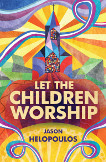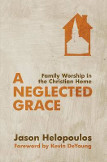
A Flesh and Blood Tabernacle
If you could live anywhere where would you live? We know God’s answer to that question: a tent (that’s His second choice) and a human body (that’s His first choice). In the Old Testament He chose to live in a tent (Ex. 25:8) and in the New Testament He chose flesh and blood (John 1:14). When the Apostle John tells us that “the Word became flesh and dwelt (literally, tabernacled or tented) among us,” he is clearly comparing the Old Testament tabernacle with the New Testament tabernacle (i.e. Christ). Let’s consider five areas of comparison in order to see the superiority of the new tabernacle over the old one.
Compare the Materials
The old tabernacle was made of wood, fabric, metal and precious stones. Multiple chapters in the Bible are devoted to prescribing and describing the building materials and the instructions for the large labor force required to build it. Although parts of the inside, especially the Holy Place and the Most Holy Place, were beautiful, only a few select priests saw that. From the outside, it was unattractive, covered with protective waterproof animal skins. All rather unimpressive, especially when compared with other contemporary structures such as the Egyptian pyramids and the Babylonian ziggurats. Israel was already being taught that God is willing to experience humbling circumstances in order to live with his people.
Compare that wood and fabric tabernacle with the flesh and blood tabernacle of the New Testament. Christ dwelt not in a tent, but in a human nature miraculously created by God without human hands. Although he possessed the glory of deity, this godhead was largely veiled by his flesh. His “tent” was unattractive from the outside – he looked just like an ordinary man. As Isaiah predicted, he was “as a root out of dry ground. He has no form or comeliness; and when we see him, there is no beauty that we should desire Him” (Isa. 53:2). The Word became flesh, just ordinary everyday skin, muscle, blood, brain, etc., and dwelt among us. God was willing to experience this humbling experience in order to live as close as possible with his people. He lived with us, like us, as us.
Despite all the similarities, there is one striking difference. The old tabernacle was a temporary tent-like structure that could be easily dismantled for traveling and which eventually disintegrated and disappeared. In contrast, Christ “was, and continues to be, God and man in two distinct natures, and one person, for ever” (Shorter Catechism 21). God lives in flesh and blood permanently.
Compare the Dwellings
Early in the Old Testament, God met with the patriarchs in a few place, wherever they erected altars to sacrifice to him. When God constituted Israel as a nation, he stopped meeting with individuals in various places and limited his meeting place to the tabernacle (and, later, the temple). God wanted to meet with his people (Ex. 25:8, 21, 22) but anyone who wanted to meet with him in his dwelling place had to come to the tabernacle at the center of the camp. That was the one place God dwelt.
When John says, “the Word became flesh and dwelt among us,” he is pointing to similarity and contrast in the new tabernacle. The similarity is that God still wants to live with and meet with his people. The contrast is that he dwelt “among us.” No longer confined to one place at the center of Israel, the new tabernacle walked all over Israel and even beyond, meeting with people everywhere. He was Immanuel, God with us, the divinely appointed meeting place that came to his people rather than they to him.
Compare the Glories
When the tabernacle was completed, the glory of God, often called “the Shekinah,” descended upon it and took up residence in the Most Holy Place (Ex. 40:34-38). That divine glory-cloud was largely hidden in that inner sanctuary unless the tabernacle was moving when the glory-cloud would rise, give guidance, and then return to his resting place in the Most Holy Place when the journey was complete. Apart from these journeys, and the annual Day of Atonement, when the High Priest would enter the Most Holy Place with sacrificial blood, the divine glory was largely unseen. Indeed, when Moses asked to see God’s glory, he was told “You cannot see my face; for no man shall see me and live” (Ex. 33:20).
That’s why John’s words are so striking. The Word not only became flesh and dwelt among us, but “we beheld his glory.” It could be translated “we (not just the High Priest) gazed with wonder upon his glory.” “Glory” is a big word for John, appearing eighteen times in his Gospel, with “glorify” also appearing twenty-three times. But what was Christ’s glory? He lived in obscurity, worked in an unpopular region, taught just handfuls of people most of the time, had only twelve steady students, with one of them eventually betraying him and another disowning him. It doesn't look much like glory, does it? It’s not the glory of numbers, of popularity, of power, of academic success, of material possession, etc., but the glory of humble service, especially the humble service and suffering of the cross (John 12:23-25) That’s the strange glory that Christ demonstrated and the disciples saw. That’s what John was remembering when he said, “we beheld His glory, the glory as of the only begotten of the Father, full of grace and truth.” They saw the glory of God in the face of Jesus Christ (2 Cor. 4:6).
Compare the Fullness
The wood and fabric tabernacle had some grace and some truth. It showed God’s grace in providing sacrifices, priests, rituals that allowed the people to approach God, pray to God, worship God, serve God, and learn of God. It showed the truths of God’s holiness and God’s salvation. So there was grace and truth in the old tabernacle, but it was limited. The glass was less than half-full.
The flesh and blood tabernacle is “full of grace and truth.” No matter how much grace we withdraw, there is more grace available. No matter how much truth we learn, there is more to learn. Christ is like a self-replenishing fountain that no matter how much you withdraw from it is never empty. He is not just full to the brim but full to overflowing with grace and truth.
Related Resources
Vern Poythress The Shadow of Christ in the Law of Moses
J.V. Fesko Christ and the Desert Tabernacle
Christward Collective is a conversation of the Alliance of Confessing Evangelicals. It is supported only by its readers and gracious Christians like you. Please prayerfully consider supporting Christward Collective and the mission of the Alliance.



















 © Alliance of Confessing Evangelicals
© Alliance of Confessing Evangelicals


